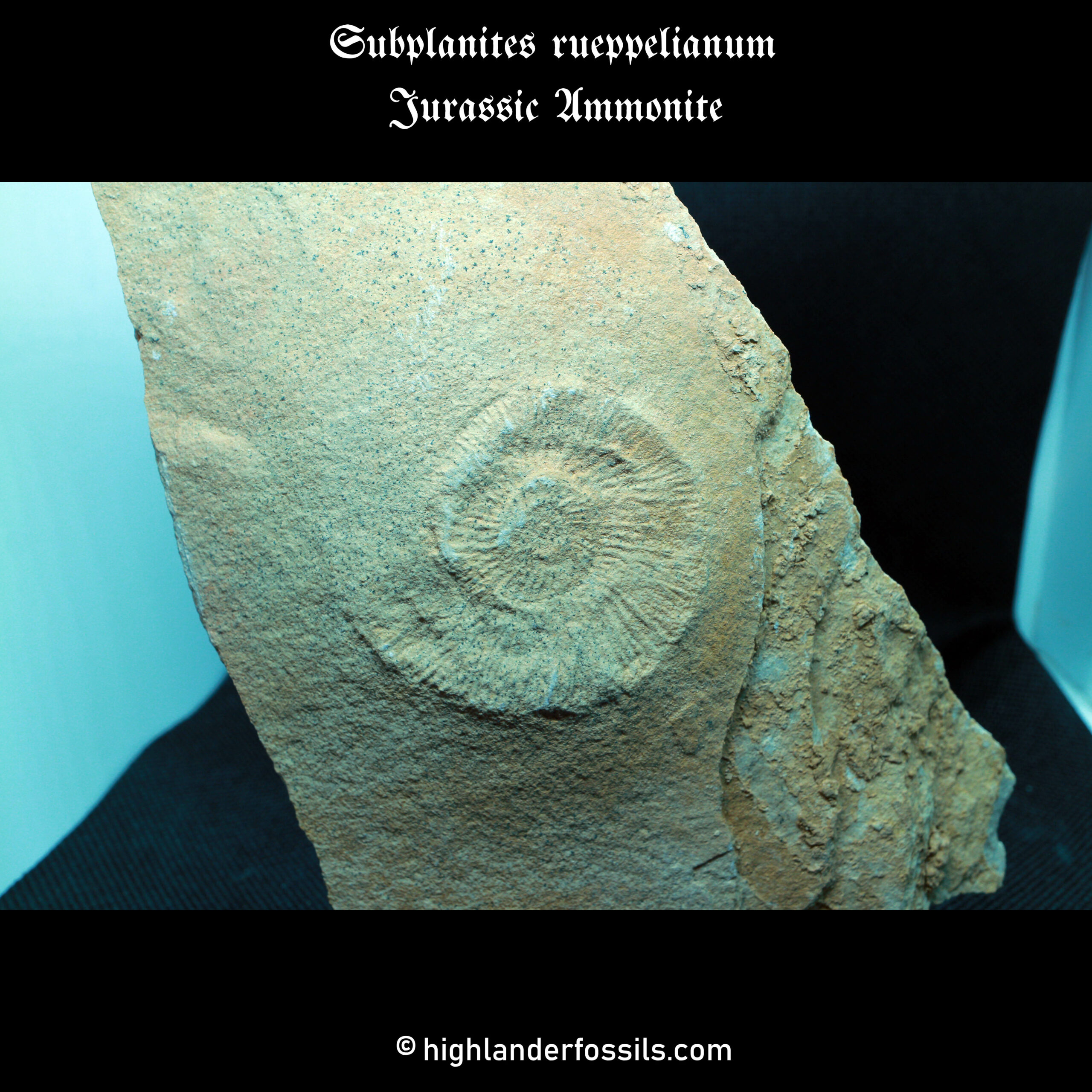Description
About Subplanites rueppelianum Jurassic Ammonite Subplanites rueppelianum
Physical Description
Subplanites rueppelianum is an small ammonite reaching to about 7 cm in diameter. It is preserved different than most other ammonites it is more 2D than 3D. A Subplanites has many small groves on its shell, they start off as a single ridge and split into two and sometimes three otherones all the way to the edge of the shell. It is believed that the animal inside an ammonite shell had many tentacles for grabing prey and motion. Ammonites were fast moving predators with good eyesight to find their prey. To protect it self it has a aptychus, two plates or lids (so to say) to close the entrance of its shell.
Age and Distribution
S. rueppelianum is from the Upper Jurassic of Germany. This ammonite lived approximately 150 million years ago. At the time this area was full of small athols and lagoons, which covered most what is now southern Germany. At this time it was nearer the equator. Subplanites rueppelianum co-inhabited the athols with one of the most famous animals of that time: the Archaeopteryx. Besides them flying overhead, there were also flying reptiles like: Pterodactylus, Rhamphorhynchus, Anurognathus and a few others. In the warm waters one could encounter marine reptiles like the Ichthyosaurus, Cricosaurus, fishes, sharks, cephalopods and crustaceans and many more. There are about 800 or so known fauna of the Solnhofen area.
About the Perisphinctoidea Jurassic Ammonite Subplanites rueppelianum
Evolutionary Significance
The first ammonites can be found in Lower Devonian fossil beds. The Perisphinctoidea family members are found from the Lower Jurassic (176-172 MYA) untill the Lower Cretaceous (122-101 MYA). Ammonites in general would died out at / near the end of the Cretaceous period (65 MYA). Ammonites were more closely related to squid, octopuses and cuttlefishes than with a nautilus (which looks more like them)
Taxonomy
Subplanites rueppelianum belongs to the Virgatosphinctinae which is a subclass of the Perisphinctoidea ammonites. There is also another member of this species of the same age and area which can be found, and that is the Subplanites moernsheimense, which is the larger cousin of the S. rueppelianum.





